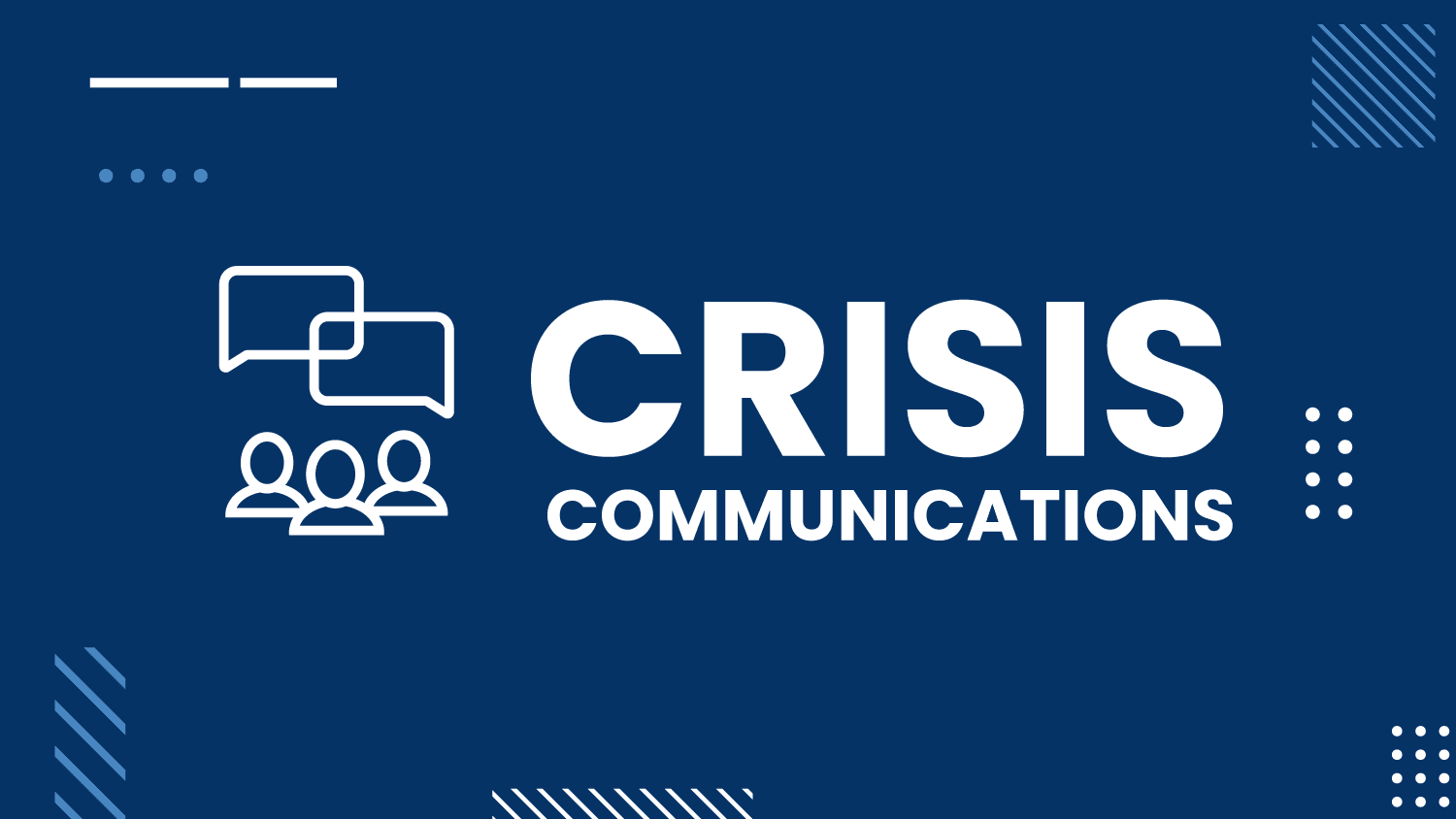
Given the state of politics, it’s probably never been easier getting into a crisis and never more difficult to get out of one without alienating someone. Unfortunately, this became true for a client that had been in business for a decade or so, and, for most of that time, had the good luck of avoiding any crises.
We provided counsel to them, and compiled the following five lessons (some based on other observations):
- Develop a crisis plan before a crisis. You may have built up goodwill and strong relationships with your customers and your community over the years, and have avoided a crisis – but that doesn’t mean you don’t need a crisis plan. Crises can happen to good companies but it makes sense to develop a plan. The plan should include a range of crisis scenarios – even though you should expect that the actual crisis probably won’t exactly fit into any one of your scenarios. But at least it starts the process of how to respond. If you don’t have a process when a crisis hits, it’s harder to know how to respond, and that’s when a potential small fire can start to burn out of control. The other aspect of a crisis plan that’s is important is developing an internal communications process so that when a crisis hits, different layers are informed and understand 1) that the company recognizes it’s dealing with a crisis; 2) that it is taking the crisis seriously; and 3) that people inside the company have the information they need to know to manage their jobs during the crisis. We’ve seen situations where board members, for example, didn’t know what the plan was and were second-guessing every time the company issued a statement.
- Make sure to allocate appropriate resources. One of the other aspects of a crisis plan is to determine a task force of people who can focus on the crisis. Another aspect is to understand the potential costs. According to a colleague, one client felt the crisis would quickly die down so it asked that its agency to stop work several times over a two-week period, to save the budget, only to be caught short-handed as its crisis continued to spiral. They kept a short-term perspective both in terms of budget and in terms of working towards an outcome. Also make sure to have people monitor social media, and decide what to respond to and what doesn’t need to a response. And also to develop messages that appropriate staff can communicate to key stakeholders that include employees, customers, and others.
- Sometimes clients are in a no-win situation. It’s important to understand, that through no fault of their own, clients may several possible paths – and none of them may be ideal because one group or another will be left unhappy. Social media reactions can make the in-crisis organization feel like they’re between a rock and a hard place. In that case, organizations need to consider:
- What’s the worst-case scenario and how can we minimize the likelihood?
- What’s the best-case scenario, and how can we make that happen?
- If we can’t avoid upsetting people on both sides, how can we minimize the impact?
- What steps do we need to take after the crisis is over to rebuild goodwill?
- Do we announce a post-mortem showing that we’ve learned our lessons?
- Do we suspend any of our operations – like advertising or even what’s on our social media platforms?
- If you send an email to employees, expect it to circulate. This did not happen with our most recent client crisis but we’ve all seen this before. So keep in mind: Even a well-intended note to employees can be hard to craft, and you should expect that any email will be distributed to outsiders or posted on social media. Also keep in mind that if you communicate to employees in a town hall setting, someone may tape the discussion. The point here is just make sure that whatever you communicate to employees is something that you won’t mind seeing in print or on social.
- Make sure to communicate via the channels most relevant to the upset. We have seen clients who responded to traditional reporters but ignored social media. Responding on social media may not be the right vehicle but it’s important to look at options. Please know that whatever you post could be misconstrued as easily, if not more so, than employee communications.
Please keep in mind that your experience, as they say, may vary. No-win situations are more likely given the politicized nature of decisions that used to be ones you didn’t discuss with others. But that ship has long set sail. We’re just saying that organizations may need to re-evaluate their plans, policies and responses based on this not-so-new reality.



